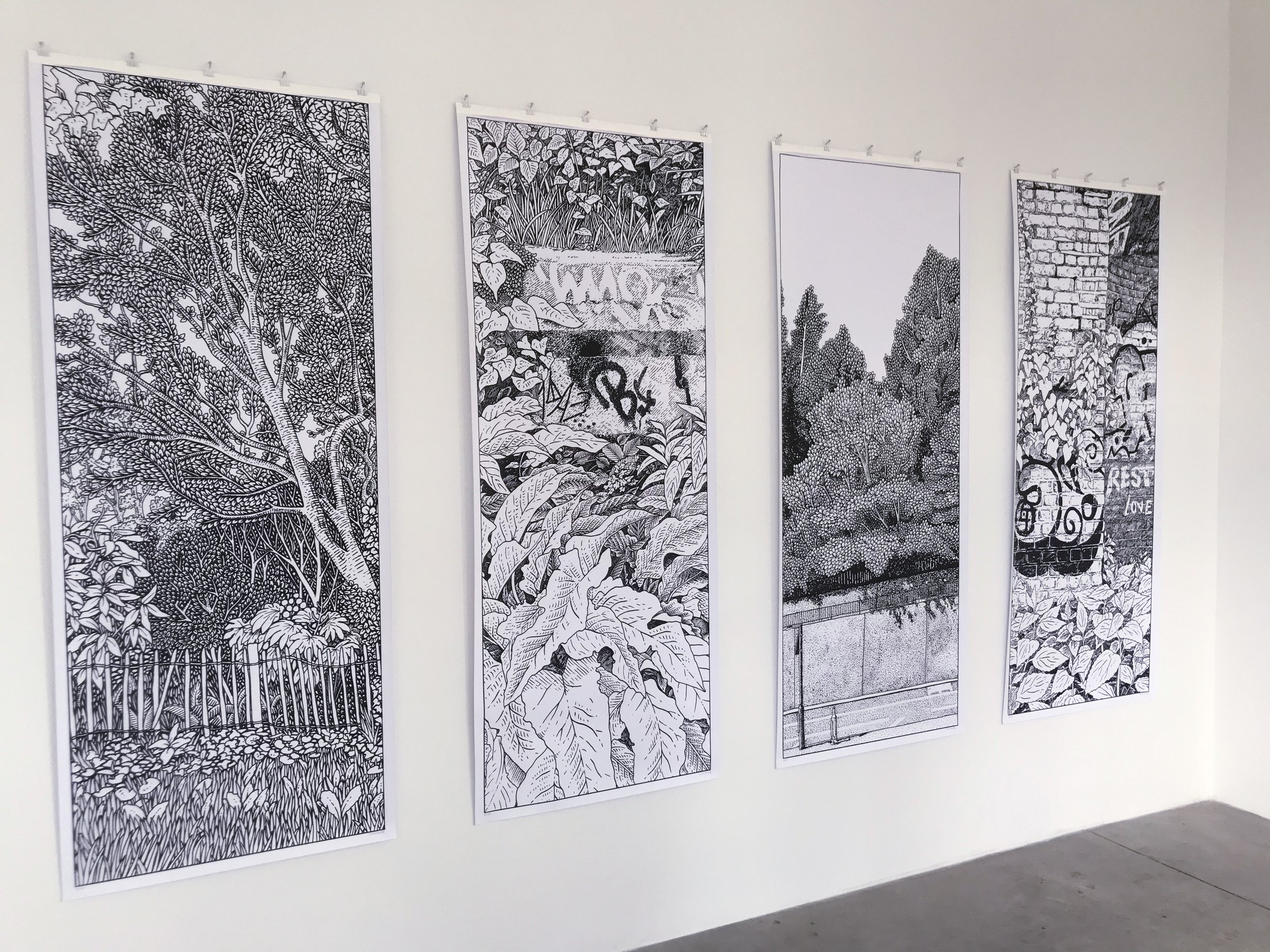Feather on dry earth 1/1 by Claire Scully
Unique edition print, custom made for "Parkland" at Melhop Gallery º7077
29.53" x 73.62" Easylam Paper, 165gsm
Unique edition print, custom made for "Parkland" at Melhop Gallery º7077
29.53" x 73.62" Easylam Paper, 165gsm
Unique edition print, custom made for "Parkland" at Melhop Gallery º7077
29.53" x 73.62" Easylam Paper, 165gsm
Claire Scully
Short bio
Claire Scully is a multi-disciplinary artist and professional Illustrator / author / educator specializing in drawing. With a focus on pattern and line and how images are constructed through details and the importance of the minutia within visual language. In her own personal research and drawing practice she strives to answer the questions of ‘what lies beyond the horizon’ by looking at the notion of landscape, memory [individual and collective] and projections of the unknown.
Claire's work explores a variety of themes including the relationship between humans and their environment, the ‘silent struggle’ between Nature and Humanity. Her book ‘Internal Wilderness’ (published by Avery Hill Books), is part of an ongoing project looking at ‘landscape and memory’ and explores our relationship with the environment, effects we have on the world and space around us and in turn it’s profound effect on our own memory and emotions. Her work explores ideas of personal / collective identity through visual language.
Claire uses traditional drawing methods and incorporating digital media she challenges its place within modern contemporary illustration / image generation. The multidisciplinary nature of Claire’s drawing / image generation also explores the importance of inspiration, in as much as what you draw from as draw with, crossing the boundaries into collage, moving image and sound. Her work plays with narratives and scale and moves through strange utopian [dystopian] worlds and parallel universes with juxtapositions of the unexpected and has explored the process of ‘seeing and thinking’ – how to interpret the creative process.
PARKLAND
Artist Statement
Parkland is the soft edges of a hard city structure. A place where system and uniform meets freeform and disorder. Parkland is the space in-between, filling the gaps, perpetually opportunistic and persistent with unwavering determination. The slowness of inanimate presence, overlooked and underfoot.
Parkland looks at the connection and relationship between people and their environment, in terms of the urban landscape. This work explores what impact we have on it and in turn the impact it has on us. We shape our lives around the rules of engagement of ‘everyday’, a cacophony of existence walking carved out lines of behaviour. Parkland shows where those lines get blurry, leaving traces of that which is outside of cultural norms or standards. Our cities are the shell inside which so much life happens, history is written, politics is fought and lost/won, ideology paraded and disenchantment abounds. The natural inclination for collective disobedience evidenced in the worn-out traces of cut-throughs and short-cuts in the well trodden thread bare corners.
For the travellers within this landscape there is a continuous flow of information, a multi sensory experience. Messages are everywhere, written and read, consumed by the viewer both consciously and subconsciously. Scrawled across an old wall, under a bridge, on a bus stop or one of the no longer relevant phone boxes. Messages of hope, of defiance, of protest, of connection, of affiliation and of humour. Communication of a more subtle nature is absorbed in the form of the carefully and intentionally landscaped structure of possession. What little ownership people do have is fiercely protected and for those with very little the options are very few, fitting in what available space there is.
Parkland is also a place where people reconnect and catch up, perhaps with an old friend but maybe more importantly to catch up with themselves and with nature. Parkland isn’t about the wide open, but more about the green veins that run through a city, the arteries of earth and soil. Finding a quiet space in between an old fence and a Hornbeam and being consumed by the land.
Parkland is both familiar and unknown all at once. Familiarity breeds contempt… But does it though? On pondering this proverb with its sentiment as old as the hills it leads me to ask: Where does that leave us? being creatures of habit after all. In essence this relates to the idea that a close connection to or holding extensive knowledge about someone or in this case something, being a place can lead to lack of respect or even resentment. But taking a moment to unpick the ‘contempt’ a little, I’m not entirely sure that for most of us familiarity does breed contempt. It would be fair to say that the modern world is possibly a little more complex than that. Familiarity, in this instance, breeds a multitude of feelings and behaviours often in contradiction to each other; Affection and disdain, complacency and interest, safety and insecurity, monotony and difference, comfort and agitation.
The environment of Parkland is illustrated using an intensely detailed drawing approach, though many scenes are full and at times overwhelming they are carefully structured. Intensity and quality of line is the focus, to be lost in or consumed by the space or indeed the lack there of. There are rarely any people in Parkland mostly the evidence of them. My trips are solitary and introspective in their meanderings much like a ‘dérive’ but as a solitary act, not in defiance or as a means to an end but one of compulsion and habit.





